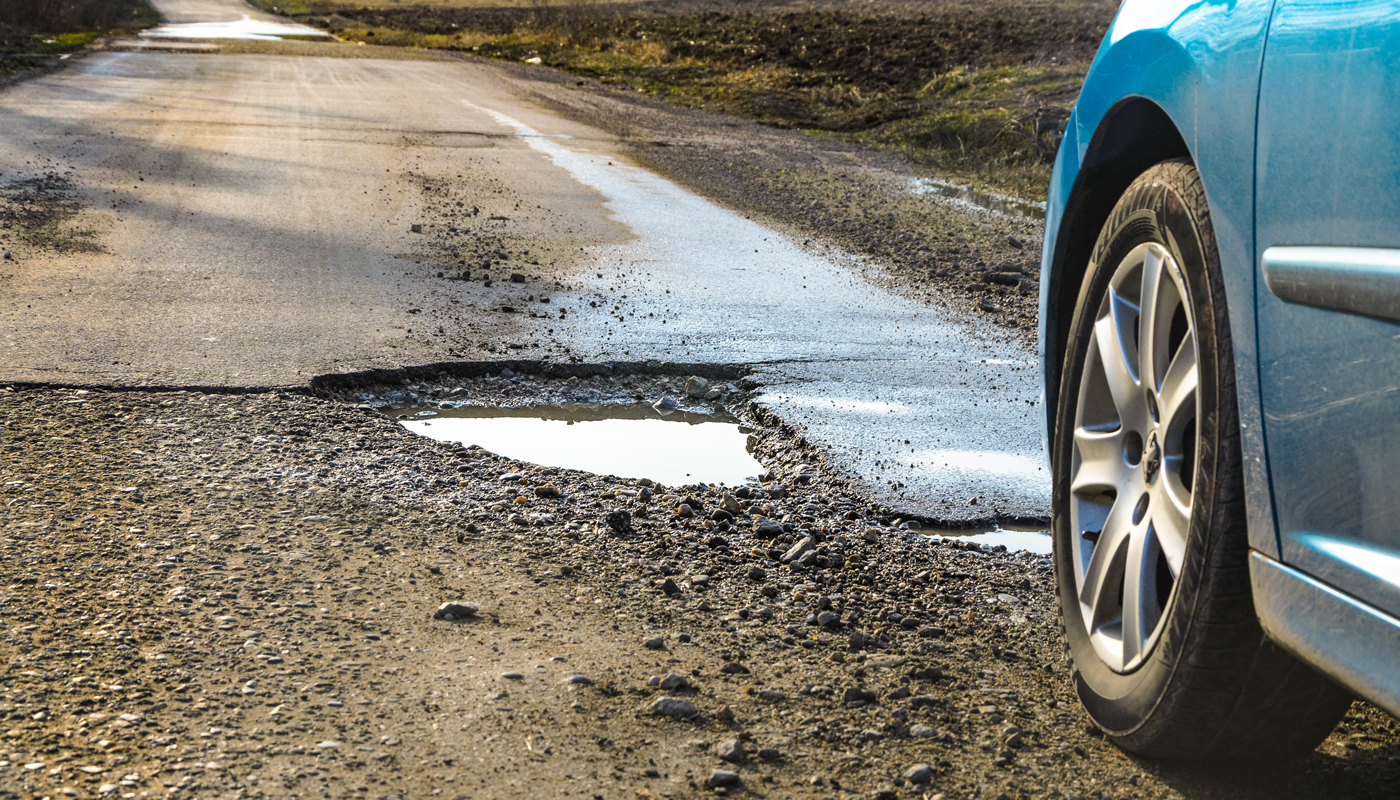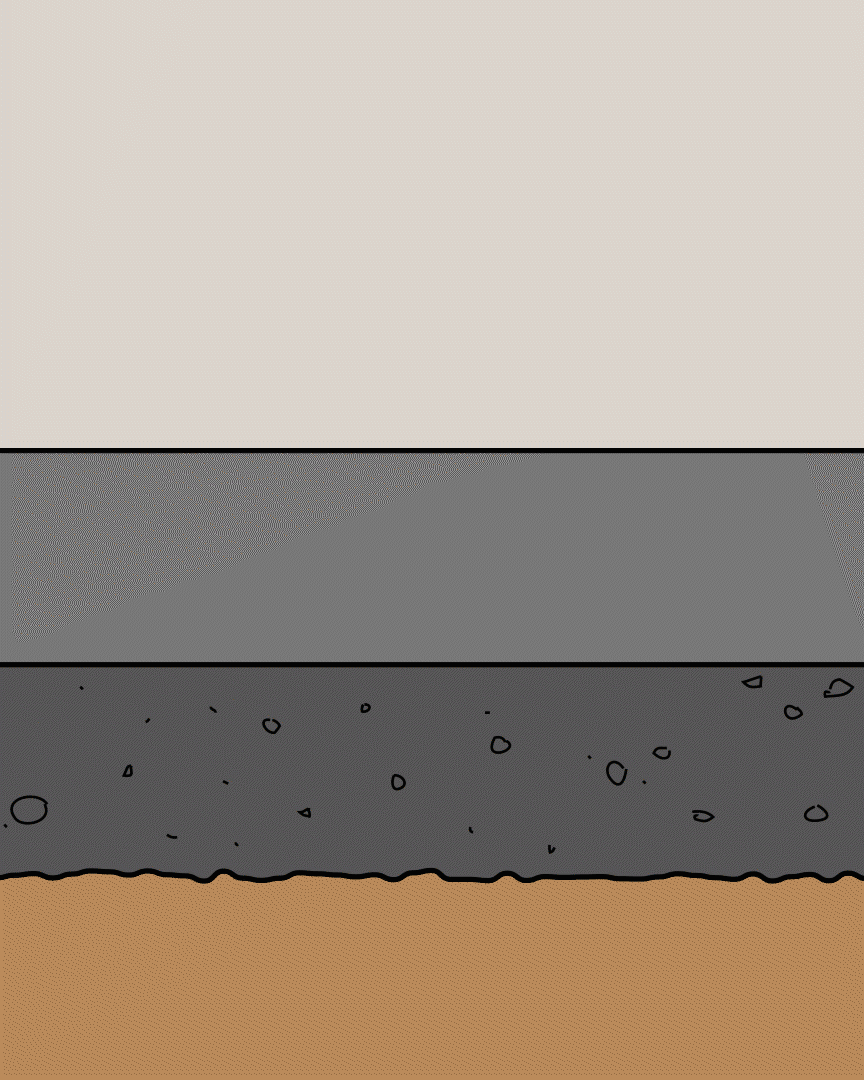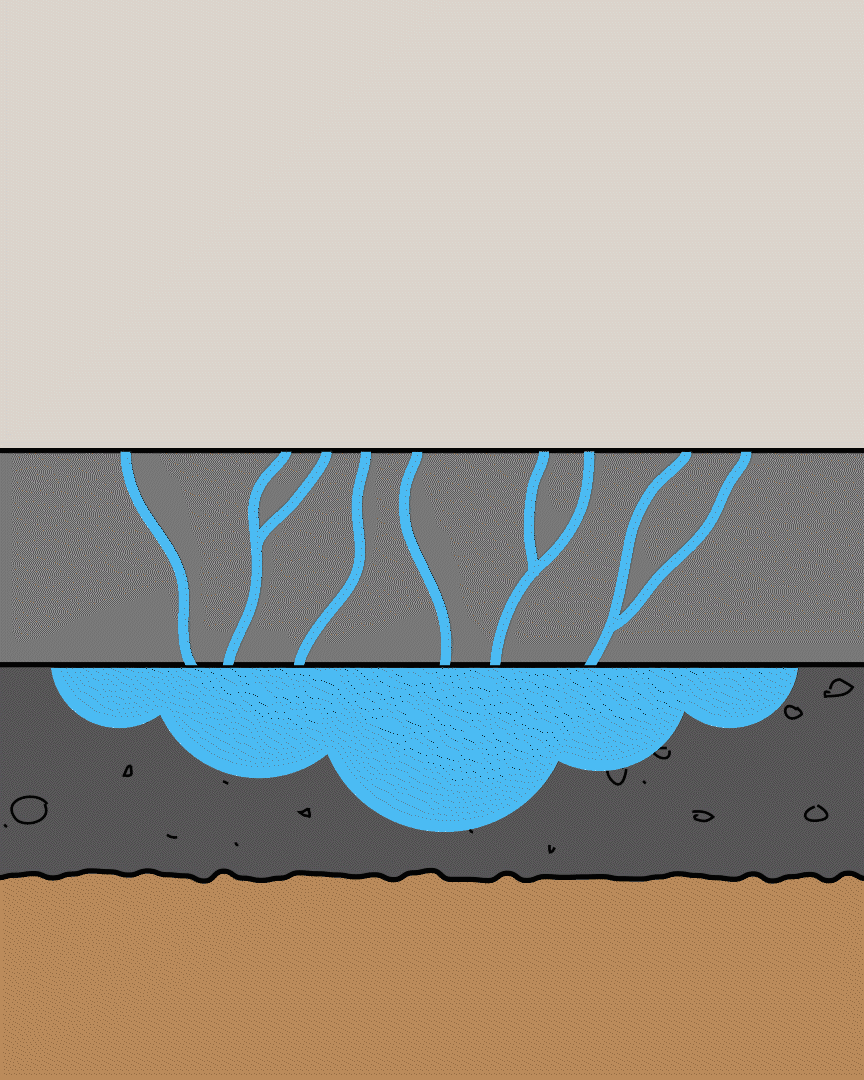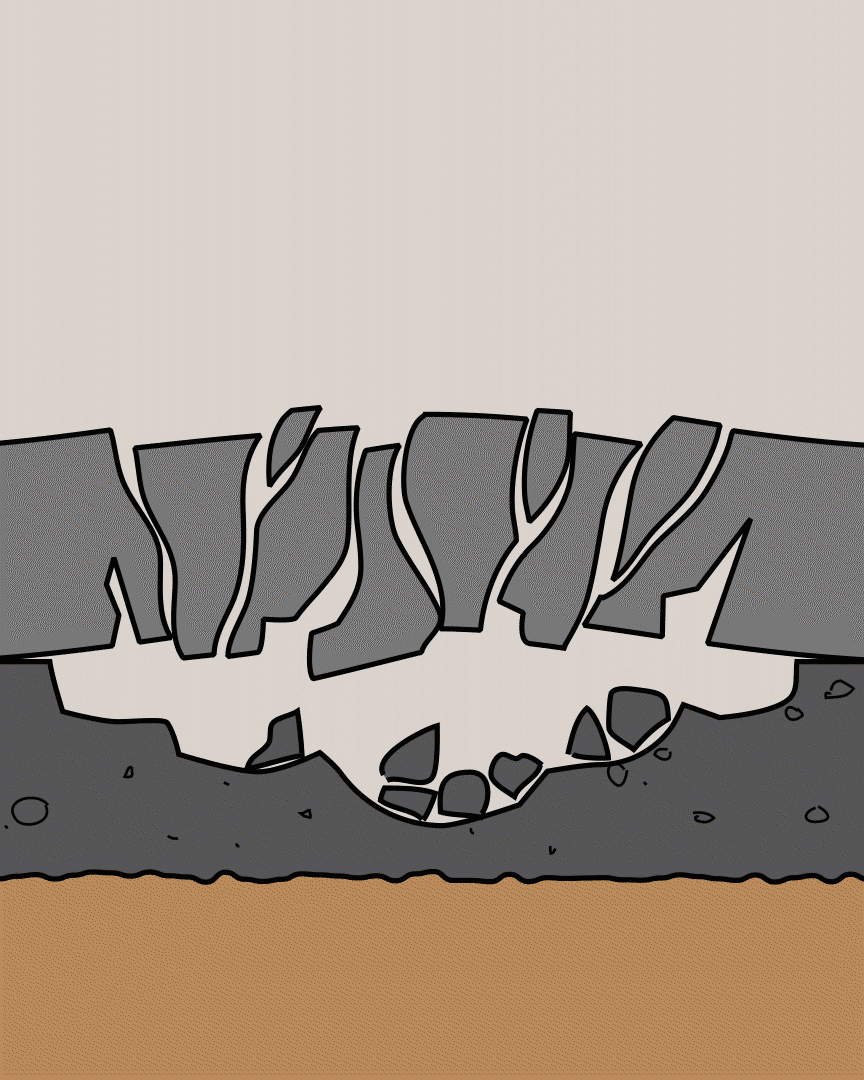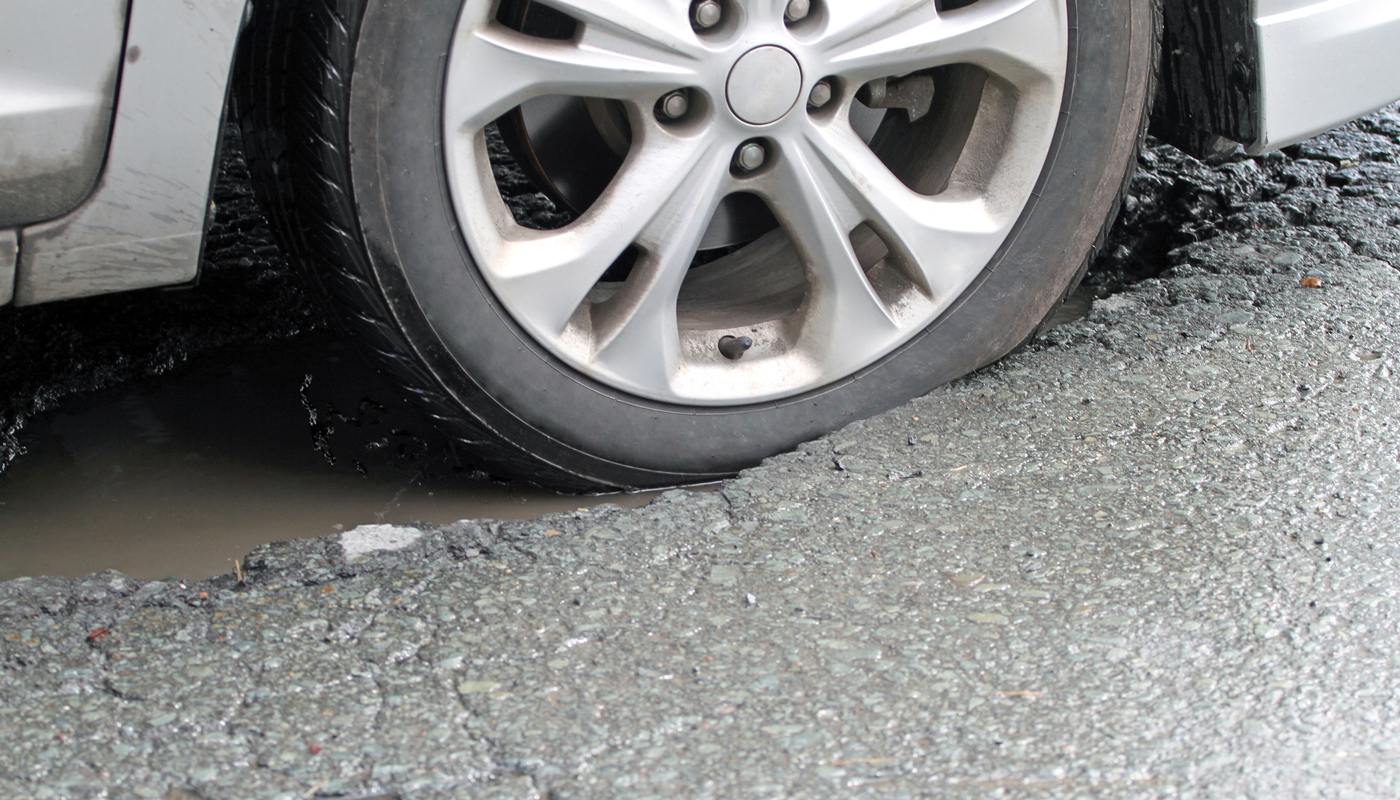Car tires are important for your vehicle's overall performance. We've put together some tips and preventative maintenace goals to help you avoid costly damage to your vehicle's tires.
Potholes can turn a smooth roadway into an obstacle course. These tips can help you understand, and minimize, the damage potholes can cause, and possibly to avoid them altogether.
How do potholes form?
There are many factors that can create the right conditions for a pothole to form. It doesn't matter if you live in colder climates or in the sunny south, potholes can form from factors like excessive water, freezing temperatures and heavy vehicles, which take their toll on highways and roads.
Potholes can pop up on roads no matter the weather. When it rains, water infiltrates into tiny cracks in the road. Then, if it gets cold and possibly freezes and then expands, making the cracks bigger. When it warms up again, the ice melts, leaving gaps in the road. This cycle happens over and over, weakening the pavement until chunks start to break away, forming potholes.
But it's not just the winter weather causing chaos. All the cars and trucks driving over the road put a lot of pressure on it. As cracks start to form from the weather and repeated use, the weight of vehicles only makes them worse.
The constant pounding from wheels rolling over weak spots can break off chunks of pavement, creating even bigger holes. Sometimes, if the road wasn't built well in the first place or isn't maintained properly, potholes can form faster.
Here's some visuals on how those external factors of weather, construction and traffic team up to create a pothole:
